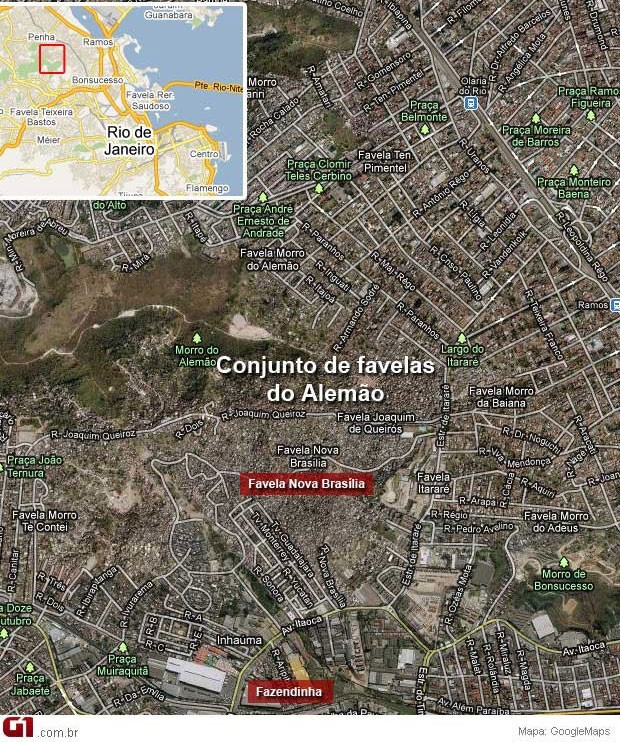






On October 18th 1994, agents of the Civil Police of Rio de Janeiro were deployed in numerous houses of the favela of Nova Brasilia —which makes part of a set of favelas known as “Complexo do Alemão”— pretending to carry out an arrest warrant. During the operation, the agents executed 13 people, tortured and sexually assaulted 3 young girls, two of them being minors. The police officers claimed that the victims who ended up dead had resisted the arrest, that way they avoided any further investigation linked to the events that ended up with casualties in the police raid.
On May 8th 1995, the Department of Robbery Repression and Thefts against Financial Establishments, an agency within the Civil Police, carried out a new raid in the favela Nova Brasilia, attempting to capture suspects involved in arms trafficking. Police used multiple weapons, even shooting from a helicopter flying over the favela and causing panic among its residents. According to declarations of neighbors of the house where the young suspects were found, even though the suspects surrendered and implored for their lives, at least 8 of the 13 victims were murdered, both inside the house and in the moment they surrendered to the police.
Both police raids ended up with 26 executions and 3 torture and sexual violence victims committed by police and military forces. In both massacres the corpses were removed from the scene, this obstructed the proper investigation to determine the context in which the homicides had occurred. The forensic firearm examination was also not done in that moment. Despite many evidences that indicated extrajudicial killings, the testimony given by the authorities, even those involved in the raids and that were also in charge of the in the investigations, declared that in both massacres there were confrontations between the victims and police agents, which justified the violent reaction from the police.
On July 1996, CEJIL and Human Rights Watch/Americas presented the case before the Inter-American Commission on Human Rights. Which in 2011 issued a set of recommendations for the Government of Brazil, which ignored the procedures and caused the IACHR to send the case to the Inter-American Court of Human Rights in 2015. After new testifications and records given by the victims’ representatives, and the following defense request of the Brazilian Government, the Court set the Public Hearing for the case on October 12 and 13 during the 56th Extraordinary Period of Sessions of the Inter-American Court of Human Rights in Quito, Ecuador.
Unfortunately the case of Nova Brasilia is not an isolated incident, but an example of the multiple cases of police brutality. In the decade of 1990 —since January 1993 to July 1996—, 1.194 victims had been counted, among dead and wounded by gunfire perpetrated by the police of the State of Rio de Janeiro. Between 2003 and 2014, 10.634 homicides were committed by police actions in Rio de Janeiro.
Help us continue this critical and urgent work with a donation!
DONATE NOW